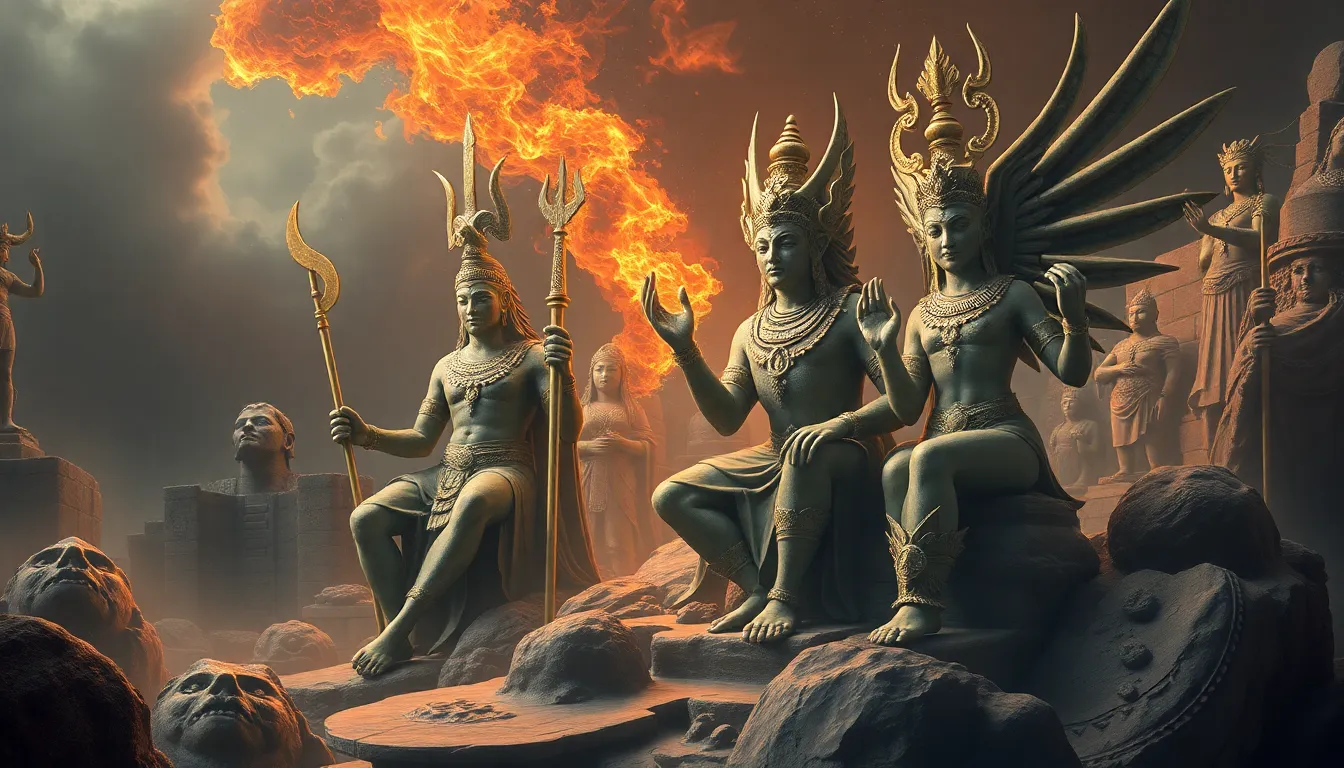When the Earth Wept: The Emotional Depth of Flood Myths
Introduction: The Universality of Flood Myths
Throughout human history, flood myths have been a poignant part of our collective storytelling. Cultures around the world— from the Ancient Near East to the Americas— have created narratives that reflect the cataclysmic power of water. These tales are not merely stories of destruction; they embody profound emotional truths about humanity’s relationship with nature.
Water, as a powerful symbol in mythology, evokes a spectrum of human emotions. It can represent both life-giving nourishment and overwhelming destruction. The duality of water’s nature is echoed in the myths surrounding floods, making them universally significant as they resonate with our shared fears, hopes, and the cycle of life.
Understanding the Nature of Myths
Myths serve as a mirror to society, reflecting the values, fears, and aspirations of the cultures that create them. They are narratives that explain the unexplainable, providing frameworks for understanding the complexities of existence.
The purpose of myths extends beyond mere entertainment; they encapsulate lessons and truths that help individuals navigate their emotional landscapes. Through storytelling, cultures convey complex emotions and experiences in a way that is accessible and relatable, allowing listeners and readers to connect with their own feelings.
Common Themes in Flood Myths
Flood myths are rich with themes that resonate deeply with the human experience. Some of the most prominent include:
- Destruction and Rebirth: Floods symbolize both the end and a new beginning, representing the cycle of life and death.
- Purification and Renewal: Water serves as a cleansing force, washing away sins and impurities, often leading to a fresh start.
- The Relationship Between Humanity and Nature: These myths highlight the delicate balance between human existence and the natural world, often illustrating the consequences of ignoring this relationship.
Cultural Perspectives on Flood Myths
Notable flood myths from various cultures provide insight into how different societies interpret the emotional impacts of floods:
- Noah’s Ark: In Judeo-Christian tradition, the flood serves as a divine punishment for humanity’s wickedness, with Noah representing hope and rebirth.
- The Epic of Gilgamesh: This ancient Mesopotamian story features a great flood sent by the gods, emphasizing themes of mortality and the quest for eternal life.
- Deucalion’s Flood: In Greek mythology, Deucalion and his wife Pyrrha survive a flood sent by Zeus, symbolizing resilience and the continuity of life.
These narratives demonstrate how different cultures understand and interpret the emotional weight of floods, often framing them as both a punishment and a chance for renewal.
Psychological Insights: Why Do We Weep?
The emotional responses evoked by floods in mythology can be traced to the psychological symbolism of water. Water often represents:
- Grief: Floods can symbolize overwhelming loss and sorrow, mirroring the emotions experienced during times of personal tragedy.
- Cleansing: Just as floods can wash away the old, they can also represent a desire for renewal and healing from past wounds.
These symbolic meanings allow individuals to connect deeply with the narratives, invoking feelings of empathy and understanding that transcend cultural boundaries.
The Earth as a Sentient Being: Anthropomorphism in Flood Myths
In many flood myths, the Earth is portrayed not just as a backdrop, but as a character with its own emotions and motivations. This anthropomorphism enhances the emotional depth of these narratives by allowing readers to see the Earth as a living entity that can grieve and react.
For instance, in some traditions, the flood is depicted as the Earth weeping for the sins of humanity, highlighting a shared emotional connection between people and the planet. This portrayal encourages a sense of responsibility towards nature and emphasizes the consequences of human actions.
Flood Myths and Environmental Awareness
In contemporary discussions of climate change, flood myths gain renewed relevance. They serve as cautionary tales about humanity’s relationship with nature and the potential consequences of environmental neglect. As we witness increasing instances of flooding due to climate change, the emotional weight of these myths can inspire:
- Empathy: Understanding the emotional narratives behind floods can foster a greater connection to those affected by natural disasters.
- Respect for Nature: Recognizing the power of nature and our vulnerability can motivate more sustainable practices and environmental stewardship.
Art and Literature: The Legacy of Flood Myths
Flood myths have transcended their oral origins, finding expression in various artistic forms, including literature, painting, and film. These artistic representations capture the emotional essence of the myths, allowing new generations to engage with their profound themes.
From classic literature like “The Flood” in the Bible to modern adaptations in films, the emotional depth of these stories continues to resonate. Artists often depict the chaos of floods alongside the beauty of renewal, illustrating the duality of destruction and hope.
Personal Reflections: Connecting Myth to Modern Life
Flood myths are not just relics of the past; they hold relevance in our personal experiences and collective memory. Many people can relate to the feelings of loss, grief, and rebirth that floods symbolize, whether through personal tragedies or shared experiences of natural disasters.
Encouraging readers to reflect on their own emotions in relation to these events can foster a deeper understanding of both the myths and their own lives. How have floods—literal or metaphorical—impacted your journey? What emotions do these stories evoke for you?
Conclusion: The Enduring Power of Flood Myths
In conclusion, flood myths offer a rich tapestry of emotional and cultural significance. They remind us of the delicate balance between humanity and nature and the profound emotions that accompany destruction and renewal. As we navigate the challenges of modern life, these narratives serve as essential tools for understanding our emotions and resilience.
Preserving these stories for future generations is vital, as they play a crucial role in helping us comprehend the complexities of human emotions and the enduring connection we share with the natural world.



